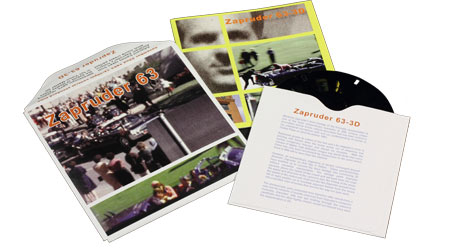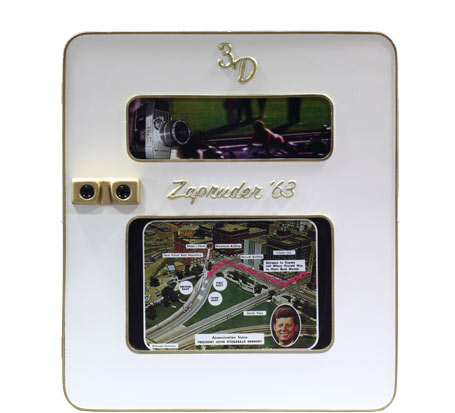Many years later I obtained a copy of Zapruder’s witness statement. He describes what was going through his mind as events unfolded. Clearly he was distanced from the action by the act of watching it through the viewfinder; making it seem unreal, a mediated event. He talks about the moment when the first shot rang out and the president clutched his chest, believing this to be a joke on Kennedy’s part; pretending to be shot. Then comes the headshot. I believe from this moment on Zapruder is in a state of shock, lens glued to the passage of the presidential limousine as it disappears from view with Jackie kneeling on the trunk of the moving car (To retrieve fragments of her husband’s skull? To Escape? To help Secret Service Agent Clint Hill climb aboard?).
He talks about the moment when the first shot rang out and the president clutched his chest, believing this to be a joke on Kennedy’s part; pretending to be shot.
I’d collected viewmaster reels, stereoscopic viewers, odd photographic equipment for years, so during my early viewings of the 8mm footage it was not a great leap of imagination for me to realise the way Zapruder had panned with the action offered an opportunity to realise the scene in 3D. I proposed the idea first in 1985, attempting it by making slides of adjacent frames. I was not happy with the results. In 2002 I attempted it again as an anaglyph moving image piece. Still not happy with it. Finally, I feel that affordable 3D moving image technology has caught up with my aspiration for the piece, and with the 50th anniversary of the Kennedy assassination upon us I feel it is finally time to present 63|3D for exhibition.
My intent in presenting these images in 3D is a tangled weave of many conflicting feelings and thoughts. There’s a compulsion to it that cannot be fully explained. The original impetus to replicate Ballard’s portrait of obsession in The Atrocity Exhibition remains, as does the cold technological challenge to prove that 3D rendering may be possible, but mixed with this is an inexplicable urge to reclaim these images, to strip them of the status of cultural icons, as if they were just another string of Warhol repetitions, and reinstate their power as shocking first hand witness evidence. I feel the need to somehow to place us in Zapruder’s shoes, to witness events as he witnessed them, to feel what he felt and to see ourselves, equipped as we are with mobile devices that permanently connect us to the world, as potential future citizen journalists. The Arab Spring, the murder of Lee Rigby, the death of Ian Tomlinson; all reveal our contemporary role in documenting events, upholding justice and holding the systems of justice and government to account when things go wrong.
Barry Hale, Threshold Studios






